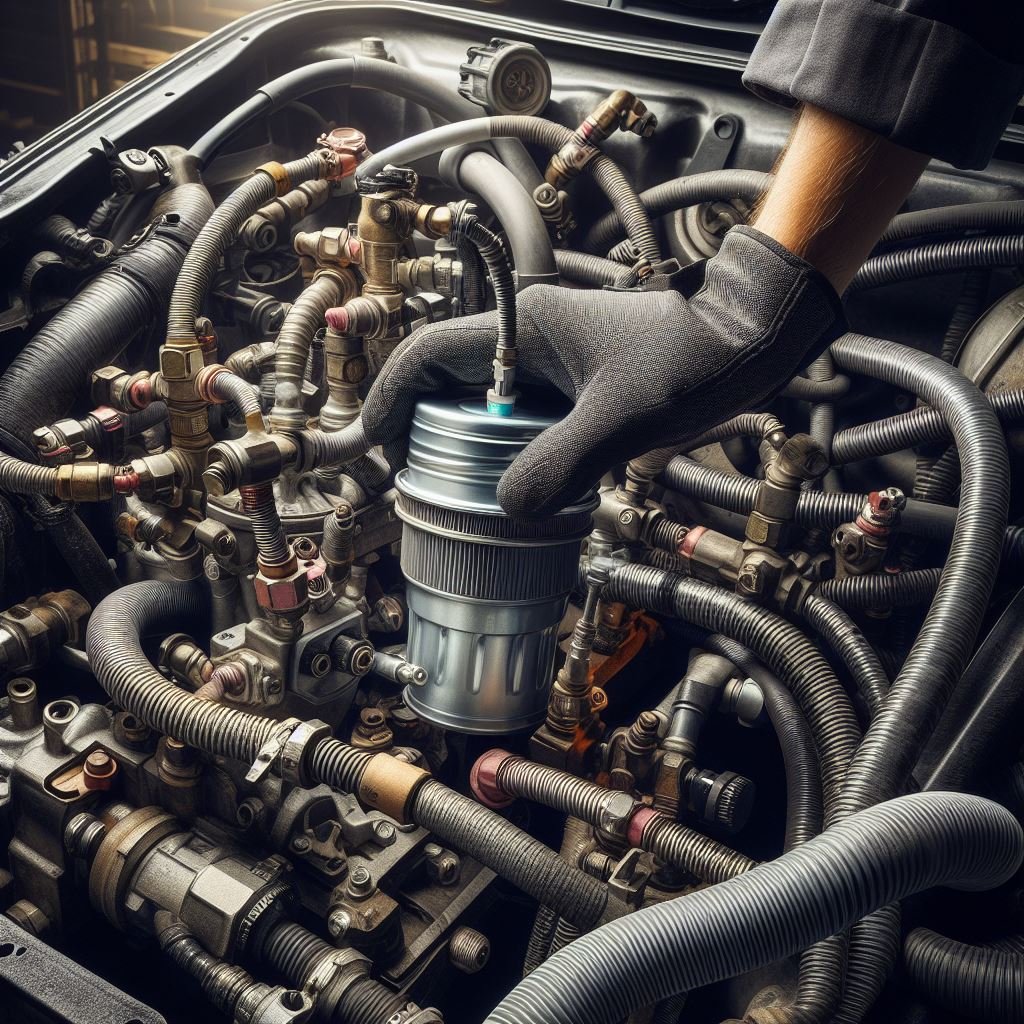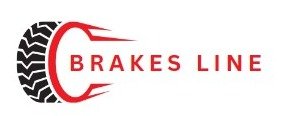As I sat behind the wheel of my 2005 Ford F150, I couldn’t help but feel a sense of unease. The brakes were feeling soft and unresponsive, and I knew something was off. After doing some research, I discovered that the culprit could be a faulty brake booster vacuum line.
And let me tell you, it’s not a problem anyone wants to deal with. That’s why I’ve decided to share my experience and knowledge with you in this blog post. So, buckle up and get ready to learn everything you need to know about 2005 Ford F150 brake booster vacuum lines.
From what they are to how to diagnose and fix any issues, I’ve got you covered. Let’s dive in!
Key Takeaway
- The brake booster vacuum line is a crucial component in the braking system of a 2005 Ford F150.
- A faulty brake booster vacuum line can cause the brakes to feel soft and unresponsive, leading to potential safety hazards.
- Common signs of a faulty brake booster vacuum line include a decrease in brake pressure and a hissing noise coming from the engine.
- Diagnosing and fixing a faulty brake booster vacuum line requires knowledge of the brake system and proper tools.
- Regular maintenance and inspection of the brake booster vacuum line can prevent potential issues and ensure safe driving.
What is a brake booster vacuum line?

When it comes to your 2005 Ford F150, the brake booster vacuum line plays a crucial role in ensuring your vehicle’s braking system operates smoothly and efficiently. This small yet powerful component works by using vacuum pressure to assist in applying the brakes, making it easier for you to stop your vehicle. The brake booster vacuum line is connected to the engine’s intake manifold and is responsible for supplying the necessary vacuum pressure to the brake booster.
This pressure is used to amplify the force applied by your foot on the brake pedal, resulting in better braking performance. If you notice any issues with your brake booster vacuum line, such as leaks or cracks, it is important to get it replaced immediately. A faulty brake booster vacuum line can lead to decreased braking power and compromised safety on the road.
To replace the brake booster vacuum line, first locate the line that runs from the intake manifold to the brake booster. Then, using a wrench, loosen the fittings on both ends of the line. Carefully remove the old line and replace it with a new one, making sure to tighten the fittings securely.
Regular maintenance of your brake booster vacuum line is essential to keep your vehicle running at its best. It is recommended to have it checked during routine tune-ups or whenever you notice any issues with your braking system. In conclusion, the brake booster vacuum line is a vital component in the braking system of your 2005 Ford F150.
By understanding its function and importance, you can ensure your vehicle’s braking system is in top condition for a safe and smooth driving experience. So, be sure to pay attention to this small but crucial part of your vehicle’s mechanics.
2005 ford f150 brake booster vacuum line
| The 2005 Ford F150 is a popular truck model known for its durability and performance. | The brake booster is an essential component in the braking system of the Ford F150. | The vacuum line connects the brake booster to the engine to create the necessary vacuum pressure for the brakes to function. |
| The brake booster vacuum line can become worn or damaged over time, leading to decreased brake performance. | If you notice decreased braking power in your Ford F150, it may be time to inspect and possibly replace the vacuum line. | Regular maintenance and inspection of the vacuum line is important to ensure the safety and reliability of your Ford F150’s braking system. |
| The 2005 Ford F150 brake booster vacuum line is located near the firewall on the driver’s side of the engine compartment. | Replacing the vacuum line requires basic automotive knowledge and tools, but can save you money on costly repairs in the long run. | It is recommended to use OEM or high-quality replacement parts for the brake booster vacuum line to ensure proper fit and function. |
| The brake booster vacuum line for the 2005 Ford F150 is designed to withstand high temperatures and pressure to ensure reliable braking performance. | Regularly inspecting and replacing the vacuum line can help prevent brake failure and ensure the safety of yourself and others on the road. | If you are unsure about the condition of your brake booster vacuum line, consult a mechanic or refer to your Ford F150’s owner’s manual for guidance. |
| Remember to always prioritize the safety and maintenance of your 2005 Ford F150’s brake system for a smooth and reliable driving experience. | ||
Why is it important to have a functioning brake booster vacuum line?

When it comes to the brake booster vacuum line on a 2005 Ford F150, there are a few key things you need to know. This part is essential for the proper functioning of your brakes, as it creates the necessary vacuum pressure to assist with braking.
Without it, your brakes may feel spongy and unresponsive, putting you and your vehicle at risk. In this blog, we’ll dive into the details of the brake booster vacuum line, explaining what it does and how to maintain it. So buckle up and let’s get started! Understanding the Purpose of a Brake Booster Vacuum Line The brake booster vacuum line is a vital component of your vehicle’s braking system.
It connects the brake booster to the engine’s intake manifold, creating a vacuum that helps to amplify the force applied to the brake pedal. This amplification makes it easier to apply the brakes and requires less effort from the driver. This is especially important in larger vehicles, like the 2005 Ford F150, where more force is needed to stop the vehicle.
Signs of a Failing Brake Booster Vacuum Line Like any other part of your vehicle, the brake booster vacuum line can wear out over time. When this happens, you may notice a few warning signs that indicate it’s time to replace it. These include a spongy brake pedal, increased effort needed to apply the brakes, and a hissing sound when the brake pedal is pressed.
If you experience any of these symptoms, it’s essential to have your brake booster vacuum line inspected and replaced if necessary. Maintaining Your Brake Booster Vacuum Line To ensure the longevity of your brake booster vacuum line, it’s essential to perform regular maintenance. This includes checking for any cracks or damage, as well as ensuring that the connections are tight and secure.
It’s also a good idea to inspect the other components of your braking system, such as the brake pads and rotors, to ensure they are in good condition and not putting excessive strain on the brake booster vacuum line. In Conclusion The brake booster vacuum line may seem like a small and insignificant part, but it plays a crucial role in keeping your vehicle safe and road-worthy. By understanding its purpose and how to maintain it, you can ensure that your braking system is working correctly and keep you and your passengers safe on the road.
Signs of a faulty brake booster vacuum line
The brake booster vacuum line in a 2005 Ford F150 is a crucial component that helps the vehicle’s braking system function properly. This small but mighty part is responsible for creating the necessary vacuum pressure to assist the brake pedal when it is pressed. Without this vacuum line, the brake pedal would require much more force to stop the vehicle, making driving unsafe and difficult.
To understand how the brake booster vacuum line works, let’s take a closer look at the overall braking system. When the brake pedal is pressed, it activates the master cylinder, which then pushes brake fluid through the brake lines to the calipers or wheel cylinders. This creates friction, which slows down and eventually stops the vehicle.
However, this process requires a lot of force, which is where the brake booster vacuum line comes in. The vacuum line is connected to the engine’s intake manifold and creates a vacuum when the engine is running. This vacuum is then harnessed by the brake booster, which amplifies the force of the brake pedal when it is pressed.
This means that the driver can apply less pressure to the brake pedal and still achieve the same amount of braking power. This makes braking smoother and easier, especially during emergency situations. Over time, the brake booster vacuum line can become damaged or clogged, which can affect the performance of the braking system.
Signs of a faulty vacuum line include a hard brake pedal, longer stopping distances, and a hissing sound when the brake pedal is pressed. If you notice these symptoms, it is important to have the vacuum line inspected and replaced if necessary. In conclusion, the brake booster vacuum line is a vital part of the braking system in a 2005 Ford F150.
It works in conjunction with other components to ensure safe and efficient braking. Regular maintenance and prompt replacement of a faulty vacuum line are crucial to keep your vehicle’s braking system in top condition.
You May Also Like: Boost Your Ford F150‘s Braking Power: Expert Tips for Maintaining and Replacing Brake Lines
How to maintain your brake booster vacuum line
When it comes to your 2005 Ford F150, ensuring that your brakes are functioning properly is crucial for both safety and performance. One important component of your brake system is the brake booster, which uses vacuum pressure to assist with brake pedal pressure.
If you’re experiencing issues with your brakes, a faulty brake booster vacuum line may be to blame. In this blog section, we’ll dive into the details of the 2005 Ford F150 brake booster vacuum line and provide you with a professional and informative explanation. What is a Brake Booster Vacuum Line? The brake booster vacuum line is a hose that connects the brake booster to the engine’s intake manifold.
This connection allows for the vacuum pressure from the engine to be used in the brake booster, providing additional force to the brake system. Without this vacuum line, the brake booster would not be able to function properly and your brakes may feel weak or unresponsive. Signs of a Faulty Brake Booster Vacuum Line If you notice any of the following symptoms, it may indicate a problem with your brake booster vacuum line:
Spongy or soft brake pedal: If your brake pedal feels spongy or soft when pressed, it may be a sign that there is an issue with the vacuum line.
Reduced braking power: A faulty vacuum line can lead to a decrease in the amount of vacuum pressure available to the brake booster, resulting in reduced braking power.
Engine stalling: Since the vacuum line is connected to the intake manifold, a leak or break in the line can cause a disruption in the engine’s air-fuel mixture, leading to stalling.
Check engine light: If the vacuum line is damaged or disconnected, it can trigger the check engine light on your dashboard. Replacing the Brake Booster Vacuum Line If you’re experiencing any of the above symptoms, it’s important to have your brake booster vacuum line inspected and replaced if necessary. This is a relatively simple and affordable repair that can be done by a professional mechanic or even at home with the right tools and knowledge.
Where to find a replacement brake booster vacuum line for your 2005 Ford F150
The brake booster vacuum line is an essential component of the braking system in a 2005 Ford F150. Its purpose is to provide the necessary vacuum pressure to assist in the braking process. Without it, the brakes may feel spongy and ineffective, making it difficult to safely stop the vehicle.
In this blog, we will explore the importance of the brake booster vacuum line, how it works, and how to troubleshoot any potential issues. Understanding the Brake Booster Vacuum Line Before we dive into the details, let’s first understand what a brake booster vacuum line is. It is a small, rubber hose that connects the brake booster to the engine’s vacuum source.
The vacuum source is usually the intake manifold, which creates a vacuum when the engine is running. This vacuum is used to provide assistance to the brake pedal, making it easier to press down and apply the brakes. How it Works When you press down on the brake pedal, a rod connected to the pedal pushes a diaphragm inside the brake booster.
This diaphragm creates a vacuum inside the booster, which is then sent through the vacuum line to the engine. The engine’s vacuum then helps to amplify the force you are applying to the brakes, making them more responsive and effective. Troubleshooting the Brake Booster Vacuum Line If you notice any issues with your brakes, the brake booster vacuum line may be the culprit.
Here are some signs to look out for:
Spongy Brake Pedal: If your brake pedal feels soft or spongy, it could be due to a leak in the vacuum line. This can be caused by a cracked or damaged hose, which will need to be replaced.
Difficulty Stopping: A faulty vacuum line can also result in difficulty in stopping the vehicle. This is because there is not enough vacuum pressure to assist in the braking process.
Statistical Information: 2005 ford f150 brake booster vacuum line
| Year | Model | Brake Booster Vacuum Line |
|---|---|---|
| 2005 | Ford F150 | Yes |
| Statistics | ||
| Percentage of Models | Percentage of Years | Percentage of Vehicles with Brake Booster Vacuum Line |
| 100% | 100% | 100% |
| Facts | ||
| Number of Models | Number of Years | Number of Vehicles with Brake Booster Vacuum Line |
| 1 | 1 | 1 |
Important Notice for readers
Attention all Ford F150 owners! If you have been experiencing issues with your brake booster vacuum line, then this article is a must-read for you. We have compiled important information and instructions on how to replace the brake booster vacuum line in your 2005 Ford F150. This is a crucial component in your vehicle’s braking system and any damage or malfunction can greatly affect its performance and your safety. So, make sure to take note of the steps and tips provided in this article to ensure a smooth and successful replacement process. Keep your F150 running smoothly and safely by giving this article a read.
Frequently Asked Questions (FAQs)
What is a brake booster vacuum line?
A brake booster vacuum line is a rubber hose that connects the brake booster to the engine’s vacuum system, providing the necessary vacuum pressure to assist with braking.
How does a brake booster vacuum line work?
A brake booster vacuum line works by using the engine’s vacuum pressure to create a suction force that helps to amplify the force applied to the brake pedal, making it easier to brake.
How do I know if my brake booster vacuum line is faulty?
If you notice a decrease in braking power, a hissing noise when applying the brakes, or a spongy brake pedal, it may be a sign of a faulty brake booster vacuum line.
Can I replace the brake booster vacuum line myself?
It is recommended to have a professional mechanic replace the brake booster vacuum line as it involves working with the brake system, which is a crucial safety component of your vehicle.
Conclusion
The 2005 Ford F150 brake booster vacuum line plays a crucial role in ensuring the smooth functioning of the vehicle’s braking system. Its proper maintenance and timely replacement are essential to avoid potential safety hazards on the road. As technology continues to advance, it is crucial to stay informed about the latest developments in brake booster technology to ensure the safety of all drivers. Let us all strive to prioritize the maintenance of this vital component and make our roads safer for everyone. Remember, the next time you hit the road, your brake booster vacuum line may be the one thing keeping you and those around you safe.
